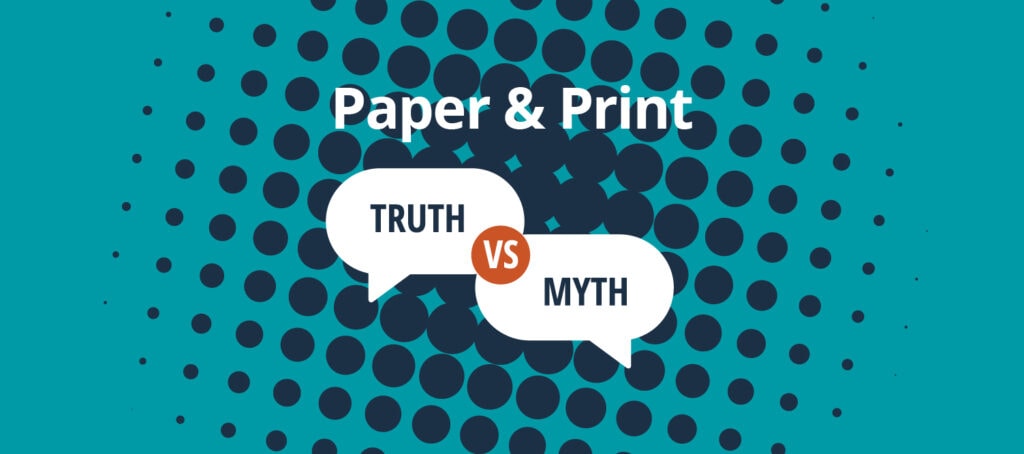With its evolution from plant-based papyrus and parchment made from animal skins, humans have used paper for over 2000 years. The printing industry makes a significant contribution to the UK economy, generating around £9BN in revenue, but its impact on the environment is relatively low.
The paper and print sector accounts for only 0.8 per cent of Europe’s greenhouse gas emissions. These emissions fell by 48 per cent per tonne between 1991 and 2019. Sixty-two per cent of the energy consumed by the paper and pulp industry is derived from renewable sources, including biomass generated from burning wood and plant material.
Over 54 per cent of the electricity used in the production of paper is generated onsite. In addition, the industry has reduced its overall energy consumption by over 11 per cent over the last twelve years. Research suggests that we each use around 119kg of paper every year, producing 73kg of CO2. This compares to driving 370 mile in a family car1.
Water is extensively used in the production of paper, and mills throughout Europe are based close to rivers and lakes, which account for 89 per cent of usage. However, 93 per cent of water is returned to the natural environment, having been circulated through the process several times. Over the last thirty years, water use in paper manufacturing has been reduced by 47 per cent, and production techniques have improved the cleanliness of the wastewater leaving mills.
With the exponential growth in capacity for cloud storage and file sharing online over the last decade, the myth of the ‘paperless office’ is perhaps one of the most persistent and stubborn. However, even electronic files have a major impact on the environment. More content is uploaded than is ever deleted. Electronic waste is currently estimated at 54 million metric tonnes across the world, an increase of over 20 per cent since 2017.
The current rate of recycling global e-waste stands at just 17 per cent, although this is much higher in Europe at 43 per cent. According to the European Commission, the IT industry uses 5-9 per cent of all of Europe’s electricity to power digital equipment and networks.
Finally, the myth that people prefer electronic transactions is dispelled by evidence that 47 per cent print these for storage as hard copies. Research shows that 74 per cent of European consumers believe they have the right to choose whether they receive communications from service providers and financial organisations in printed or electronic form.
On the other hand, paper communications are derived from sustainable and renewable sources and positively contribute to the global economy and the wellbeing of communities. PDS works with a trusted network of printers and is FSC-certified. We can help you ensure that your print projects contribute to a sustainable sector that benefits your business and your customers print solutions.
1Based on an average of 120.4g CO2/km for new cars sold in 2018


